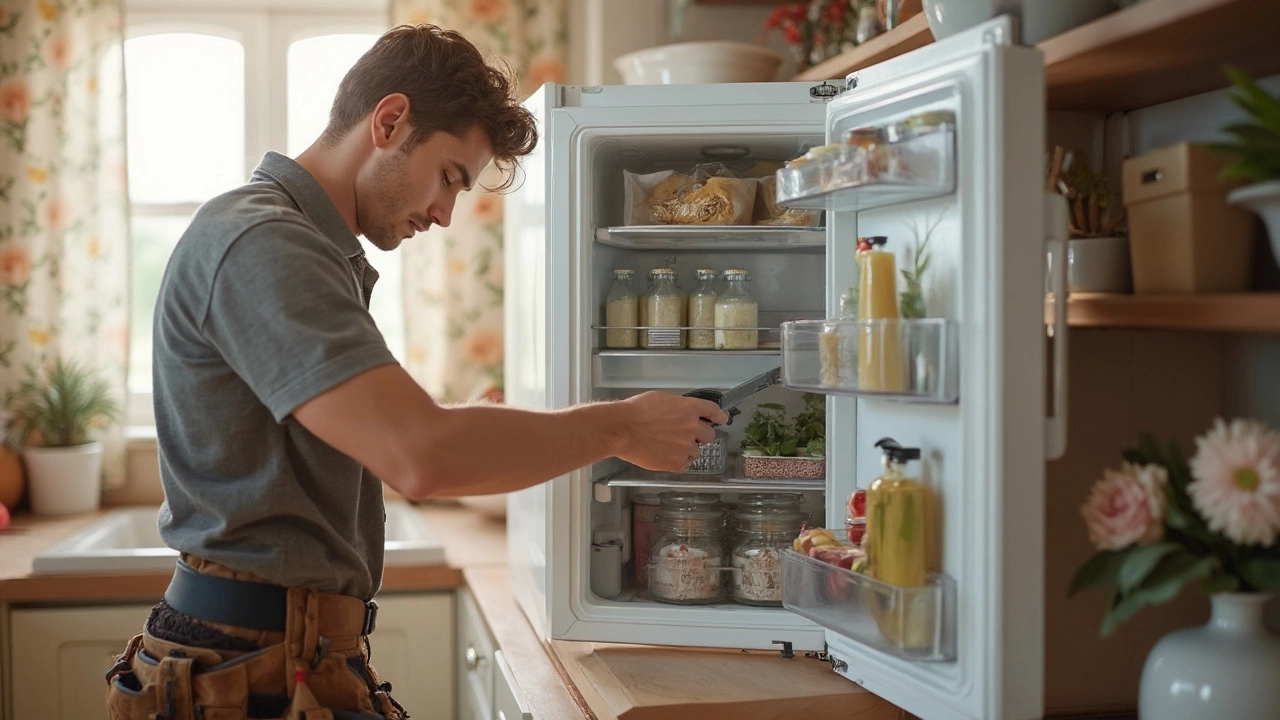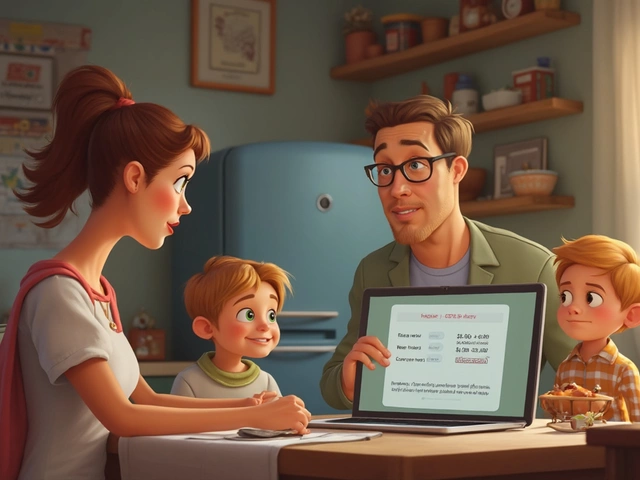Experiencing issues with your freezer can be downright frustrating, especially when you rely on it for keeping your food fresh and ready for future meals. One of the most common culprits when things go awry? The freezer compressor. So, how do you reset it and possibly save yourself from a pricey repair bill?
First things first, let’s clear up what the compressor actually does. Think of it as the heart of your freezer. It pumps refrigerant throughout the system, which is crucial for keeping everything cold as it should be. If it starts acting up, it can mess with the entire cooling process.
Before jumping into the reset process, it’s important to recognize the telltale signs of compressor problems. Does your freezer seem warmer than usual? Is it making strange noises, or just refusing to run altogether? These are red flags that something’s not right.
- Understanding the Role of a Compressor
- Identifying Signs of a Compressor Issue
- Safety Precautions Before You Start
- Steps to Reset Your Freezer Compressor
- Common Mistakes to Avoid
- Tips for Future Prevention
Understanding the Role of a Compressor
The freezer compressor is a fascinating piece of technology, and knowing what it does can help you troubleshoot problems more effectively. Simply put, the compressor is responsible for circulating the refrigerant throughout your freezer, which in turn keeps your food icy cold. It's often compared to a pump, but instead of moving water, it moves a substance called refrigerant.
This refrigerant starts out as a low-pressure gas. The compressor squeezes this gas, turning it into a high-pressure gas and pushing it through coils in the back of your freezer. As it moves through the coils, it cools down, turning into a liquid. This process is crucial because it absorbs heat from the inside of the freezer and keeps everything inside at the right temperature.
Why does this matter? Because if your compressor isn't working correctly, your freezer isn't going to maintain the temperature needed to prevent food from spoiling. It's a small component but makes a big difference.
"A freezer without a functioning compressor is as good as a car without an engine. It's critical to the appliance's operation," says John Smith, renowned appliance expert at the Appliance Maintenance Institute.
Technically speaking, when the compressor compresses the refrigerant, it raises not only the pressure but also its temperature. The coils are then used to help dissipate this heat.
Fun fact: Did you know that a significant portion of household energy consumption is from keeping our food refrigerated or frozen? An efficient compressor can really help lower those bills over time.
So, if your freezer's acting up, don't ignore it. The compressor might be trying to tell you something important.
Identifying Signs of a Compressor Issue
Is your freezer starting to act like it’s got a mind of its own? There are some telltale signs that your compressor might be the source of your troubles. The good news is, these issues are often noticeable if you know what you’re looking for.
One of the first things to watch for is a warm freezer. If the inside of your appliance is more like a fridge than an icebox, the compressor might not be doing its job effectively. It’s a sign that the refrigerant isn’t being circulated properly, which is crucial for keeping things icy cold.
Another hint is strange noises. If you hear clunking, buzzing, or even complete silence when you’re pretty sure you should be hearing that comforting freezer hum, the compressor could be struggling or even stopped functioning.
Sometimes the issue comes across in your electricity bill. A sudden spike in energy usage can mean your freezer's working harder than it should, often because the compressor is running overtime.
And then there’s the food itself. If you notice items aren’t freezing solid or there's a variation in how frozen certain sections are, it might just be the compressor not holding its own.
Feel like doing a deeper dive? Here’s a bit of imagery: the compressor is like a hamster on a wheel—usually running smoothly. When it starts faltering, imagine that wheel starting to hitch or slow; that’s what’s happening inside your freezer. Identifying these signs sooner rather than later can save your freezer and maybe even your groceries.
Taking note of these red flags not only helps in troubleshooting but also gives you a leg up on keeping your appliance in top shape. You’re now better prepared to troubleshoot and ideally reset before the issue leads to more significant, and more costly, problems.
Safety Precautions Before You Start
Before you rush into resetting your freezer compressor, it’s vital to take some simple yet essential safety precautions. After all, dealing with electrical appliances carries its risks, and we want to keep those to a minimum.
Here’s what you need to do to ensure your safety:
- Unplug the Freezer: Always, and I mean always, unplug the freezer before diving into any repairs or resets. This cuts off the power supply, reducing the risk of electric shocks.
- Inspect the Surroundings: Make sure the area around your freezer is clear of water spills and clutter. This helps avoid potential slips or accidents while you're working.
- Use Proper Tools: Having the right tools can make the job easier and safer. A manual or a repair guide specific to your freezer model can be handy, too.
- Watch Out for Moving Parts: Be cautious of any moving parts once you open up the freezer. This includes fans or rotating parts that could startle or injure you.
On a side note, did you know that mishandling electrical components is one of the leading causes of appliance malfunction? Proper precautions not only keep you safe but could also save your freezer from further damage.
Remember, when it comes to DIY repairs, safety should always be your top priority. It's not just about getting the job done—it's about doing it without any unwanted surprises!

Steps to Reset Your Freezer Compressor
Resetting your freezer compressor might seem like a daunting task, but it can be surprisingly straightforward if you follow the right steps. You don't have to be an expert to do a quick reset and potentially save your appliance from a breakdown.
- Turn Off the Freezer: First, unplug your freezer. This ensures your safety and resets any electrical issues that might be causing the problem. Leave it unplugged for about 10-15 minutes. This gives the compressor time to cool down and reset its system.
- Check the Thermostat: Playing with the thermostat might sound trivial, but it's a major factor. Set it to the "off" position while your refrigerator is still unplugged. Once you plug it back in, switch the thermostat to the desired temperature level gradually. This allows your freezer to adjust without immediate stress on the system.
- Plug It Back In: Once your waiting time is up, plug your freezer back in. You should hear the motor start. If it doesn't start immediately, give it a few minutes. A small delay is normal.
- Check for Improvements: Allow your freezer some time to fully start-up and stabilize. This might take a few hours. Check if it's cooling properly. If it's still too warm or making odd noises, it might be time to call in a professional.
If you've followed these steps and the issue persists, you might be facing a different problem altogether. In such cases, assistance from a technician can be invaluable.
Following these steps to reset your freezer compressor can help get your appliance back in working order and may even extend its lifespan.
Common Mistakes to Avoid
When it comes to DIY freezer fix projects, avoiding pitfalls can save you a lot of hassle. Resetting the freezer compressor is no exception. Let's see how you can steer clear of common errors.
First up, unplugging the appliance. Forgetting this crucial step when working with electrical equipment could put you at risk of a shock. Always make sure the freezer is turned off from the power source before getting started.
Next, hasty decisions can lead to trouble. If your immediate impulse is to reset the compressor as soon as something seems amiss, pump the brakes! Make sure the freezer problem is compressor-related before going through the reset process. Misidentifying the issue might mean missing an actual problem that needs attention.
Another typical blunder is skipping the waiting period. After you've reset your compressor, give it some time to stabilize—usually about 15-20 minutes. Restarting it too soon can damage the unit.
- DIY freezer repair doesn't always mean doing everything alone. Seek professional help if necessary.
- Do not ignore persistent issues even after a reset—they could be signs of a more significant failure.
- Pay attention to unusual sounds or temperatures, as these suggest the compressor issue may not be resolved.
If you find that your freezer is frequently needing resets, consider checking for proper ventilation around the appliance. Often, inadequate airflow can cause overheating, leading to compressor malfunctions. Make sure there's enough space around your freezer for air to move freely.
| Common Mistake | Why It Matters |
|---|---|
| Skipping the Unplug Step | Risks electrical shock |
| Immediate Reset Reaction | May misdiagnose the issue |
| Ignoring Persistent Problems | Could signal a bigger problem |
Tips for Future Prevention
Keeping your freezer in top-notch shape isn't just about quick fixes when something goes wrong. A little regular maintenance can go a long way in preventing those pesky compressor issues. So what are some ways to keep your freezer and its compressor running smoothly?
First up, don't overcrowd your freezer. While it might be tempting to pack it to the brim, giving your appliance room to breathe helps maintain airflow, ensuring efficient operation.
Next, make a habit of cleaning the coils. Once every six months, unplug the freezer and use a coil brush or vacuum to gently remove dust and debris from the condenser coils.
- Regularly check door seals for wear and tear. If air is sneaking out, the compressor has to work harder.
- Keep your freezer at the right temperature to avoid overloading the compressor – experts recommend around -18°C (0°F).
- Every now and then, give your freezer a break by defrosting. Even if it's frost-free, periodic defrosting can improve efficiency.
| Maintenance Task | Frequency |
|---|---|
| Cleaning Coils | Every 6 months |
| Checking Door Seals | Monthly |
| Defrosting Freezer | Annually |
And finally, if problems persist, please call a professional. Knowing when to tackle a problem yourself and when to seek help can save on unexpected damage.




